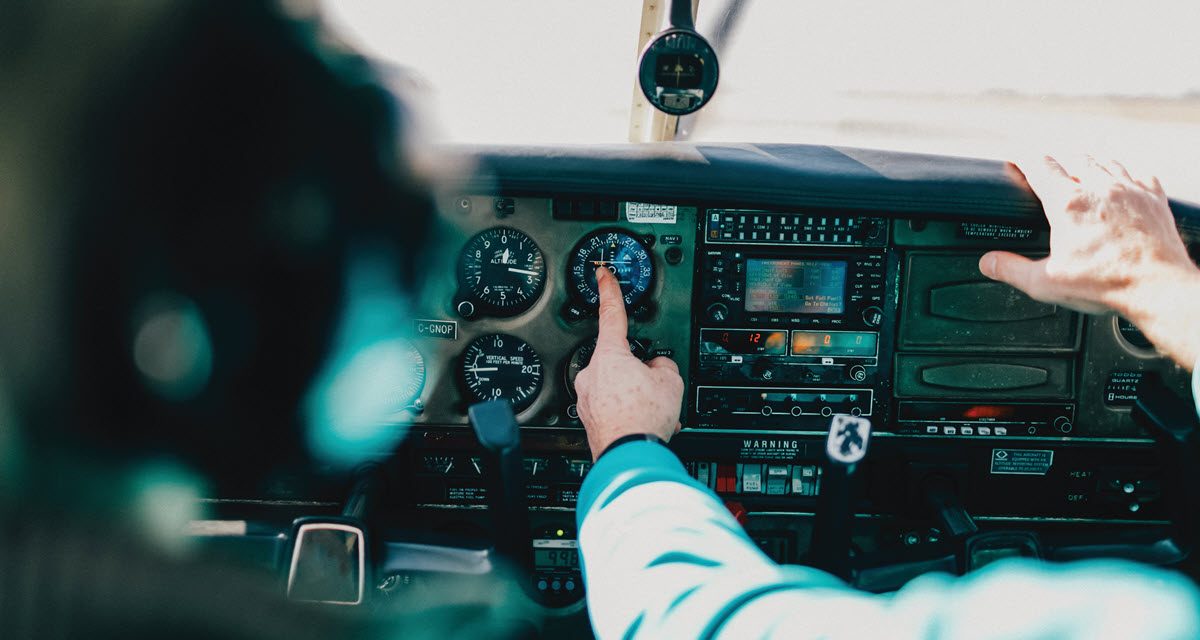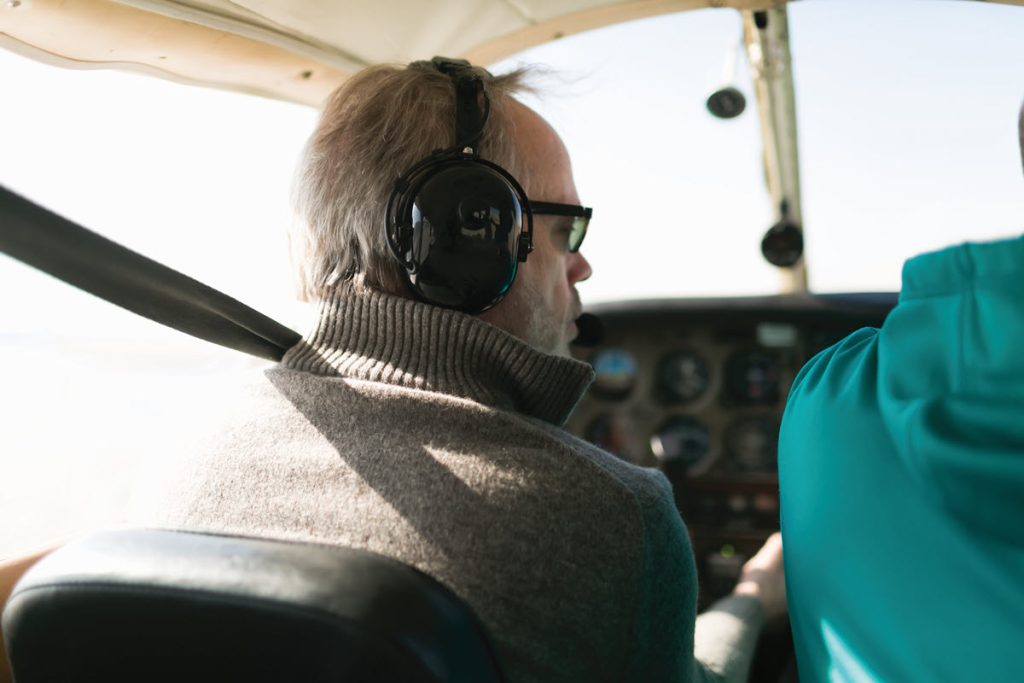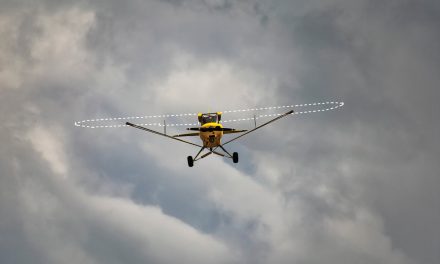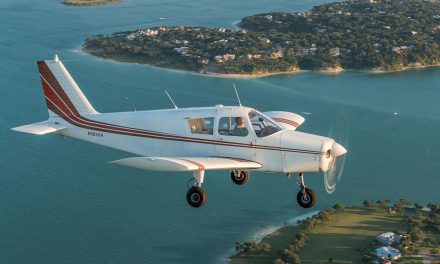If you’re acting as the Pilot in Command (PIC) on a flight, and you let a nonpilot do some of the flying from the right seat, is that legal? If a passenger is flying from the left seat and you’re in the right seat, how does that affect your role as PIC? And how do insurance companies view these practices? These are important questions to consider. While the answers aren’t necessarily black and white, we need to understand the guiding principles and boundaries from both the legal and insurance perspectives when we’re flying with nonpilots.
The Benefits of Taking People Flying
I admit I don’t like to fly alone. I actually don’t like to do much by myself. I’m what most call a “people person.” I like to fly with passengers, drive with friends, and boat with crew. My wife says it’s because I like to talk (way too much, she says) and need someone to listen. I’m not sure where she gets that idea.
Aviation is a people business, and introducing people to flying is a good thing. How else do we get new pilots without giving them the experience of flight? The EAA Young Eagles Program exists for just that reason. Because of my first Stearman ride, I was hooked, and every ride after that first flight just reinforced my passion for aviation. I flew control-line models and radio-controlled model planes until I was old enough to take flying lessons and then earned my private pilot license while I was still in high school. Being a people person, I talk to people all over the country and most, if not all, have a similar story. The first plane ride hooked them on aviation for life. As pilots, it’s our duty to pass that experience on, but we need to be aware of both the FAA regs and insurance policy guidelines while we’re doing it.
FAA Regulations
I have given rides from both the right and left seat. According to FAA regulations in FAR 91.3, I’m still the pilot in command, whichever seat I’m in.
91.3 Responsibility and authority of the pilot in command.
The pilot in command of an aircraft is directly responsible for, and is the final authority as to, the operation of that aircraft.
This means that because I’m the final authority in the operation of the plane, as long as I’m in control, I should be okay unless I’m not current and qualified. If that’s the case, I better take a look at the FAR that addresses recent flight experience. Most of us know this by heart, right?
61.57 Recent flight experience: Pilot in command.
(a) General experience.
(1) Except as provided in paragraph (e) of this section, no person may act as a pilot in command of an aircraft carrying passengers or of an aircraft certificated for more than one pilot flight crewmember unless that person has made at least three takeoffs and three landings within the preceding 90 days, and
(i) The person acted as the sole manipulator of the flight controls; and
(ii) The required takeoffs and landings were performed in an aircraft of the same category, class, and type (if a type rating is required), and, if the aircraft to be flown is an airplane with a tailwheel, the takeoffs and landings must have been made to a full stop in an airplane with a tailwheel.
There are a few more items in this FAR that pertain to IFR and VFR but, the key here is that nowhere does it say anything about left or right seat. For that matter, it doesn’t say anything about front or rear for tandem pilots. Safety note here: I really think that if you’re flying from the back seat of a Cherokee140, you’ve got bigger concerns.
Insurance Policy Guidelines
Let’s discuss the left and right seat question from the insurance standpoint. You know, “Who is flying the aircraft” type of question. Since it doesn’t appear that the FAR restricts me as a pilot flying from the left or the right seat, does the insurance? It all depends on the design of the aircraft and the controls. The thought is if there are dual controls and the pilot can access all the controls for safe flight, the pilot can fly from either seat. But typically, the person in the left seat is assumed to be the PIC, but not necessarily so.
At the Time of a Claim
What this all boils down to, when talking insurance, is who is in charge and who is flying the plane at the time of a claim. Since most pilots fly from the left seat, and most planes are designed for operation in flight from the left seat, it’s almost always assumed that the pilot in command is in the left seat. As we have established, that’s not always a requirement, but in the case of a loss where all that’s left is salvage, the left seat will be the assumption.
When could this be bad? Typically, what happens is that the owner/pilot takes a friend flying. The friend is not a pilot or is a pilot who doesn’t meet the open pilot warranty on the insurance. Maybe that person doesn’t have the hours needed or doesn’t have the advanced rating that is required for that particular plane.
Since the owner/pilot believes they are the pilot in command and they can fly from either seat, they allow this person to fly in the left seat. But what happens when the wreckage of a fatal crash is discovered, and they find a nonrated pilot or an inappropriately rated pilot was in the left seat? The insurance company starts to doubt the honesty of the insured. Why did they let a nonpilot fly? Why was an incorrectly rated pilot or inexperienced pilot in the “pilot’s” seat?
As you can guess, there are a lot of assumptions, and when no one is around to answer the questions, the insurance company could have reason to deny a claim. That doesn’t mean they will, but they could. If you really want to make it more difficult, just think what would happen if the pilot is a certified flight instructor and is sitting in the right seat. It looks very suspicious to the accident investigator.
This means that if you’re in the right seat, the person in the left seat at the crash scene will be assumed to be the pilot in command. If that person is not a pilot, is not named on the policy, or they don’t meet the open pilot warranty, your claim could be denied.
Unnamed Pilots
Often, we get a nonpilot or unqualified pilot buying an aircraft. Insurance can be difficult or impossible to get, depending on the plane. If they do get a quote, it will probably have more requirements and higher premiums than a qualified pilot would. In these situations, the buyer is often told by their friend or their CFI to just list the friend (or the CFI) as a pilot, get the lower insurance rates, and when they get their hours (or license if they’re a student), add their name to the policy as a pilot.
But that doesn’t work. Most policy language states that if you don’t meet the open pilot warranty or you’re not approved and named by the underwriters on the policy, you’re not covered. Insurance companies want to be paid for the nonpilot or low-time pilot risk. Unfortunately, many try to sidestep that. If there’s never an accident, the issue might never come up. But it’s a waste of money paying for insurance that really doesn’t cover what you’re doing. Additionally, if the underwriter finds out, they could cancel your policy.
In fact, recently we had a pilot give training to a family member in a unique aircraft. The policy was a “named pilot” policy, meaning you’re only covered to fly the aircraft if you’re specifically named as being covered. The family member was not named on the policy. After the insured gave the training and allowed the family member to accumulate a number of hours, then the pilot asked to add the family member to the policy.
The underwriter asked how that family member was able to build hours in such a unique aircraft when they were not named on the policy. The insured took a very aggressive position and informed the underwriter that he was a CFI, always in control, and met the FAA guidelines, and that the underwriter had no authority over that situation.
However, the insured failed to take several things into account. First, insurance is a contract between the insured and the insurance company. Second, the insurance company often has more limits or restrictions than the FAA. The policy discusses who can be an approved pilot on the insurance policy, and the FAA really doesn’t have authority over the insurance contract.
Often the insured thinks the underwriter is just a number cruncher who doesn’t have any aviation experience other than on the insurance side. While that can be the case, it’s surprising how many underwriters are graduates of aviation schools and are current pilots and aircraft owners. And there are quite a few who have been professional pilots before becoming an underwriter.
In this case, the underwriter was an experienced pilot and a current CFI. When the insured tried to talk his way around the situation by using terms like ATP, PIC, and CFI, and a number of other acronyms, the underwriter wasn’t impressed or confused by any of it. The underwriter knew not only the FARs but the language of the policy.
The result is that the insured broke the contract (the insurance policy) that the insured had agreed to, so he effectively voided the policy. And in this situation, the underwriter cancelled the policy because the company didn’t think he was a good risk. Again, we’re talking about the insurance company, not the FAA.
Conclusion
Does that mean we shouldn’t take people for rides or let friends fly our aircraft? No. If the plane belongs to you, and you and your friends meet the requirements and are following the FARs, you can do whatever you want. But make sure your insurance policy will cover those people and activities.
THINGS TO CONSIDER
- Do you have a named pilot policy?
- Do you have an open pilot warranty?
- Is your plane set up for flying from either seat?
- Are you capable of flying from either seat?
- If you want to train someone, make sure they can be approved with underwriting and accept the increased premium.
- FYI, allowing unapproved pilots voids your policy.







